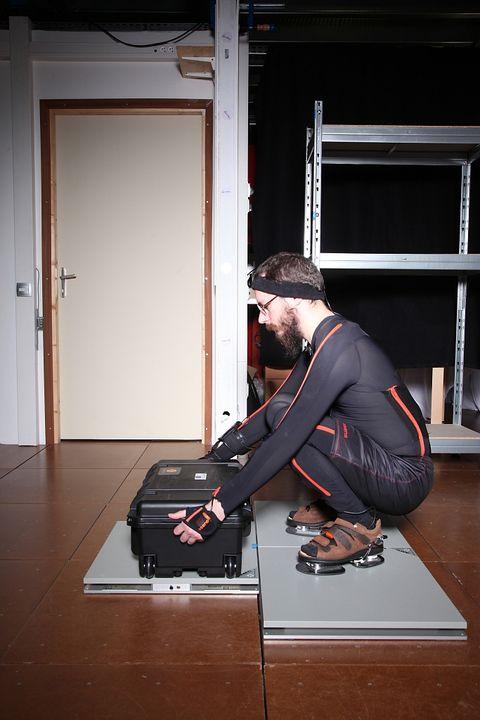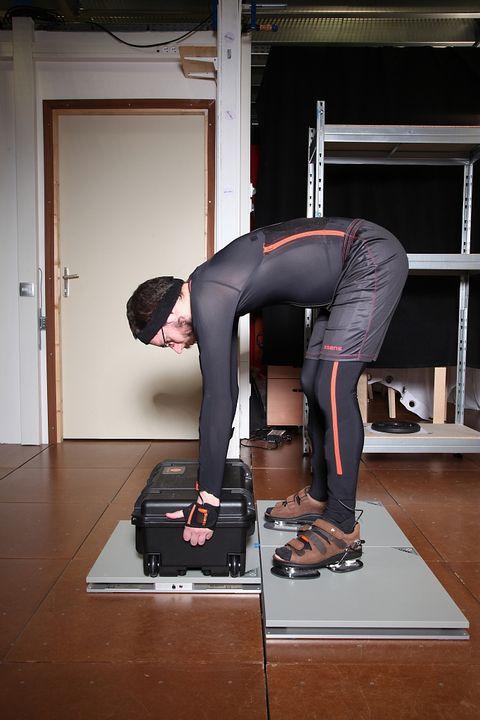Detecting poor posture at work
The Inria project team Larsen is a participant in Andy, an EU project which has as one of its objectives to detect in real-time and prevent operators’ postures that are potentially dangerous from an ergonomics point of view. In order to build up a database for ergonomics analysis, 13 volunteers equipped with inertial sensors performed different sequences of tasks that are typical of the manufacturing industry, recording more than 5 hours. A team of annotators then analyzed these sequences and evaluated each gesture based on ergonomics criteria, assessing posture, load carrying, objects manipulation, etc.
The machine learning algorithms developed in this context are used to automate traditional ergonomic evaluation, still based on manually annotated ergonomic worksheets, making it possible to detect risky postures in real-time. Real-time estimates on ergonomics and predictions of movement are then gathered by robots and used by their AI algorithms to plan suitable collaborative trajectories and to provide better assistance for human operators.
Car assembly lines: slowing down, but not stopping
How can you ensure the safety of an operator working with a cobot while preventing the robot from stopping? This is a pressing concern in car manufacturing plants, where entire production chains can end up shutting down as a result, and one that is central to a project led by the Inria project team Auctus, in conjunction with the Peugeot group.
Peugeot have been won over by the flexibility of cobots and their compact design, but they do not want to see any drop in productivity. The researchers have been looking into ways of slowing down cobots’ movements. They have also been working on their capacity to observe operators in order to anticipate their movements and to adjust their behaviour accordingly. The end goal is for cooperation between cobots and operators to become safer and more fluid, without slowing down production.
Joinery: a cobot for holding spindle moulders in place
All joiners are familiar with the spindle moulder, a machine tool that is essential but dangerous, having been responsible for many an accident. During training, apprentices are closely monitored while they learn how to use it. The Blanquefort apprenticeship training centre near Bordeaux has been keeping a close eye on a PhD within the Inria project team Auctus, which relates to a methodology for making woodwork safer using robots.
Here’s an example. Were a piece of wood with knots in it to be expelled at high speed, a cobot would be able to react 20 times faster than a human. What’s more, the level of assistance can be adjusted depending on the arduousness of the task and the ability of the apprentice.
We are proud to be used as a pilot site, and curious to see how cobotics may benefit us. If the results are conclusive, then we will share them with the national network of apprenticeship training centres.
Philippe Godin, executive assistant of the Blanquefort apprenticeship training centre, about the text Menuiserie : un cobot pour sécuriser la toupie
Coboteam: bringing manufacturers and researchers together
In Auvergne - Rhône-Alpes, the Coboteam cluster, which is coordinated by the Thésame innovation centre and supported by the local regional council, is strengthening ties between the 500 companies operating in the field of robotics and Inria project teams. Three times a year, Coboteam holds “robotics workshops”, which bring together manufacturers and researchers. The former learn how to collaborate with a laboratory, while the latter are able to identify new practical needs. In addition to this, Coboteam organises round tables on robotics during meeting days held by Inria. These events have led to multiple R&D projects. Cobotics, a recent, innovative development in robotics, occupies a dominant position.

